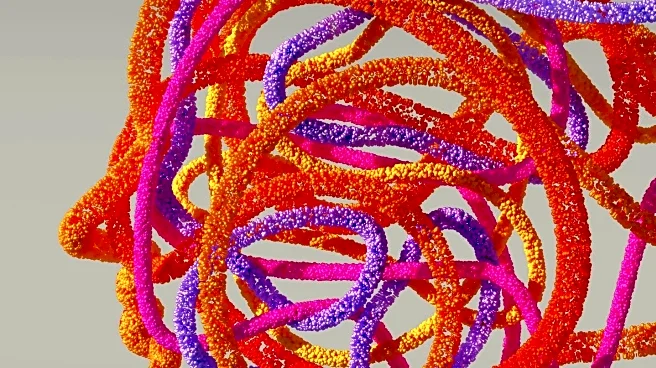What is the story about?
What's Happening?
A recent study investigates the immunohistochemical expression of leukemia inhibitory factor (LIF) and its receptor (LIF-R) in oral squamous cell carcinoma (OSCC). The research uses high-throughput tissue microarray technology to analyze LIF and LIF-R expression in OSCC, normal oral mucosa, and other oral lesions. The study finds that LIF expression is significantly lower in OSCC compared to normal oral mucosa, while LIF-R expression is higher in OSCC. This biphasic pattern suggests a role of LIF/LIF-R signaling in differentiation and malignant progression.
Why It's Important?
Understanding the expression patterns of LIF and LIF-R in oral cancer could provide insights into the mechanisms of cancer progression and potential therapeutic targets. The study highlights the complex role of LIF/LIF-R signaling, which involves activation of significant pathways like MAPK, JAK/STAT, and PI(3)K. These pathways are crucial for differentiation, maintenance, and survival of embryonic stem cells. The findings may inform future research on targeted therapies that modulate LIF/LIF-R signaling to inhibit cancer progression.
What's Next?
Further research is needed to explore the heterogeneity of LIF expression in OSCC and its correlation with cancer stage and biological behavior. Investigating the proportion of immortalized versus mortal OSCC cells may provide insights into the variability of LIF expression and its impact on tumor behavior. The study suggests that targeting LIF/LIF-R signaling could be a promising approach for developing new cancer therapies.
Beyond the Headlines
The study's findings contribute to the broader understanding of cancer biology, emphasizing the importance of signaling pathways in tumor progression. The paradoxical effects of LIF/LIF-R signaling in different cancers highlight the complexity of cancer biology and the need for personalized therapeutic approaches.
AI Generated Content
Do you find this article useful?













